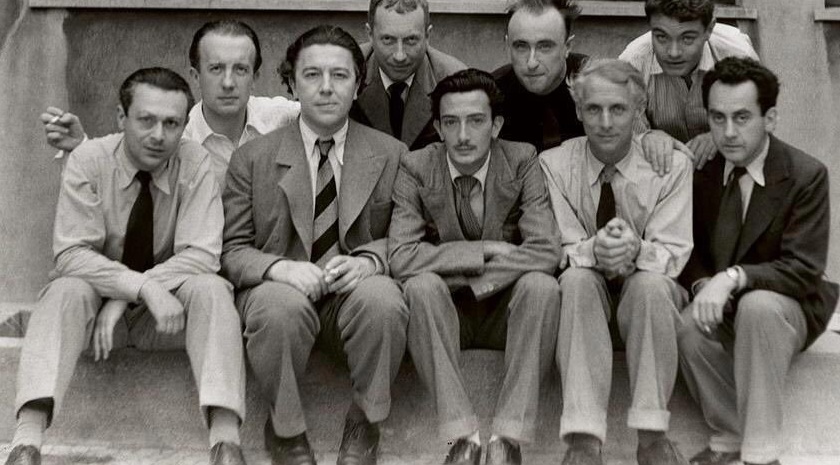“Dalí endowed surrealism with an instrument of prime importance, the paranoid-critical method, which he instantly showed himself capable of applying to both painting, poetry, movies, the construction of typical surrealist objects, fashions, sculpture, art history, and, if need be, any kind of commentary”.
André Breton
As we commemorate the week marking the birth of André Breton, one of the founding figures of Surrealism, we would like to reflect on his significant relationship with Salvador Dalí.
Dalí, a central figure in the surrealist movement, caught Breton’s attention not only for his creative genius but also for the complex psychological layers beneath his work. Dalí’s art intertwined with profound psychoanalytic reflection, a landscape where creativity met the unconscious, delving into the deepest recesses of the mind.
Breton’s view of Dalí was grounded in a blend of psychological analysis and surrealist aesthetics, where paradox and absurdity reigned supreme. For André Breton, humor was a crucial starting point, a “denial of reality” that opened the doors to new psychological dimensions. This humor was a shift in the human psyche from the ego to the super-ego, balancing pleasure and reality in a way that led to the birth of paranoia.
To Breton, paranoia wasn’t a state of confusion but a consistent, coherent delirium. In this framework, the artist existed in a “latent paranoia” state, one that allowed for freedom from the tyranny of objects while maintaining control over them through artistic sublimation.
Salvador Dalí, with his almost innocent brand of paranoia, used it as a creative engine to reshape reality into a personal and irrational vision. He described his method as “a spontaneous method of irrational knowledge based on the interpretative-critical association of delirium phenomena”. Dalí’s art was not a simple expression of madness but a conscious attempt to organize and interpret psychic chaos, transforming it into something both aesthetically and symbolically rich.
According to Breton, Dalí was more than just an artist, he was an intellectual, a thinker who used art as a means of exploring and liberating the human psyche.
For Dalí, the external object was never neutral or simple; it became a vehicle for conveying a symbolic and personal dimension. Everyday objects, like his famous melting clocks or lobsters, were transformed into instruments for challenging logic and reality. Dalí’s “paranoiac-critical method” turned these objects into surreal symbols, distorting conventional meanings and allowing for a deeper, more critical reflection on the nature of reality.
For Breton, the Catalan artist possessed an extraordinary ability to transcend the boundaries of reality. Dalí wasn’t just a creator of bizarre and fantastical images; he was a thinker, using his “paranoiac-critical method” to explore and reveal the profound contradictions of the human condition. His art was not an end in itself but an experience, a journey into the mysteries of existence, dreams, nightmares, and paranoia.
The relationship between Salvador Dalí and André Breton remains a cornerstone of Surrealism, where the boundaries of art, psychology, and reality merged to reveal new and profound understandings of the human mind.

